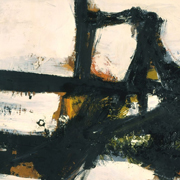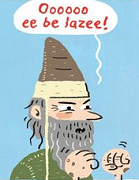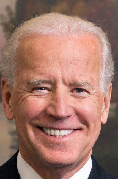|
Toph Bei Fong posted:GusIRANos Please. It's "gusanes" now.
|
|
|
|

|
| # ? Jun 3, 2024 11:09 |
|
DJJIB-DJDCT posted:Even more than arguments over what colour things were, what size they were has inspired endless arguments. To tie it to current events, the Third Temple Movement keeps running into issues with the dimensions of the temple, the menorah, the Ark of the Covenant. to be fair it's really loving hard to design a building that doesn't fall over when have a commandment from god himself that pi=3
|
|
|
|
DJJIB-DJDCT posted:Why did they do this? to sell more ads. If you include every synonym you can serve ad impressions for that synonym. it's why every google search result is desperately trying to sell you something.
|
|
|
|
Something many libs seem completely oblivious too, is how it looks that they are the ones telling people that they got to vote to prevent fascism or whatever. If I wasnt informed, and open to the messaging, it kind of falls flat when you tell people they have to vote to save the world, interspersed with stories from the weeks long european vacation you just got back from
|
|
|
|
mcmagic posted:It doesn't look like she's in actual danger this cycle but she's definitely paying to help kick her fellow "squad" members out of congress since Bush and Bowman look like they are cooked. It's also only 260k lol. Not sure what the point is other than to demonstrate fealty. summer lee may also lose thx to aipac/dmfi.
|
|
|
|
https://twitter.com/RepAOC/status/1778420938289057937?t=zIFPdj78266i7lwz4KEuWg&s=19
|
|
|
|
Blockade posted:Something many libs seem completely oblivious too, is how it looks that they are the ones telling people that they got to vote to prevent fascism or whatever. or interspersed with stories of our abetting genocide, contrary to what u.s. voters want.
|
|
|
|
gradenko_2000 posted:https://twitter.com/RepAOC/status/1778420938289057937?t=zIFPdj78266i7lwz4KEuWg&s=19 Announcing plans. It's 4 years after the campaign promise lol
|
|
|
|
Starting an exploratory committee to see how hard they can gate access
|
|
|
|
|
Willa Rogers posted:or interspersed with stories of our abetting genocide, contrary to what u.s. voters want. if the cost of democracy is 50,000 dead children maybe it deserves to die
|
|
|
|
It was funny watching AOC run away while protestors got on her about Palestine. And was there anything that the Biden administration did for student loans other than implement something already within the power of the executive branch? Like what are "plans?"
|
|
|
|
e: lol yesterday isn't today this was already covered.
|
|
|
|
tristeham posted:good
|
|
|
|
speaking of Saving Democracy, this story is a couple weeks old but it made me lol. internal memos about democrat voter-reg initiatives warn that they--get this!--might be helping the wrong kind of voters save democracyquote:Democrats spar over registration as worries over young and minority voters grow Only register democrat voters to prevent fascism & save democracy! quote:He also warned that efforts to gain Democratic votes among younger and non-Black people of color were often expensive — costing more than $1,200 per net vote in 2020, by one estimate — because the groups now include so many non-Democrats. Among voters of color, he wrote that “only African American registration is clearly a prime opportunity,” adding that netting Democratic voters among Black people cost approximately $575 per vote in 2020. I found this tidbit funny: quote:The debate has little to do with how the Democratic Party or the Biden campaign plan to approach registration, which has always involved targeting aimed at filtering out likely Republican voters. During the 2012 cycle, the campaign of President Barack Obama ran experiments in Nevada to test the effect of having voter registration canvassers wear Obama campaign apparel compared with plain gray shirts.
|
|
|
|
what’s up with Colorado democrats they really seem like a unique brand of right wing liberal https://x.com/repjasoncrow/status/1778862496046047710?s=46
|
|
|
|
lol women are getting spied on and punished on abortion already. That's your only issue that you can actually run on, you stupid genocide loving jackasses. Jesus christ. already weaking your stance because you have to be THE law and order party.
|
|
|
|
Ramrod Hotshot posted:what’s up with Colorado democrats They're from Colorado
|
|
|
|
sullat posted:Might be people whose families had to leave in 1979 for reasons uh huh and what do you suppose those reasons are
|
|
|
|
https://twitter.com/AnimarchyYT/status/1778996674486206580 totally not owned and showing the houthis why the us has no healthcare
|
|
|
|
gradenko_2000 posted:https://twitter.com/RepAOC/status/1778420938289057937?t=zIFPdj78266i7lwz4KEuWg&s=19 finally with my student loan debt paid off I can return to school
|
|
|
|
Rep. J. Crow: "There is no Deep State"
|
|
|
|
Danann posted:https://twitter.com/AnimarchyYT/status/1778996674486206580 Animarchy History
|
|
|
|
Malleum posted:if the cost of democracy is 50,000 dead children maybe it deserves to die For 1,000 a day we could have an Imperium of Man instead
|
|
|
|
Ramrod Hotshot posted:what’s up with Colorado democrats STOP MAKING LAUREN BOEBERT LOOK SMARTER THAN YOU
|
|
|
|
scary ghost dog posted:the currently unfinished postmodern religious text “one piece” posits that ancient civilizations were actually more advanced than modern civilizations because they were able to dream of a better world, while modern civilizations are chained to a repressive and stagnant world government and stuck in a false end of history Francis Fukuyama will pay for his crimes
|
|
|
|
scary ghost dog posted:the currently unfinished postmodern religious text “one piece” posits that ancient civilizations were actually more advanced than modern civilizations because they were able to dream of a better world, while modern civilizations are chained to a repressive and stagnant world government and stuck in a false end of history It's gonna turn out that the Luwians had giant mechs that will wake up when they hear the Drums of Liberation. drat, if only I had studied dead Anatolian languages...
|
|
|
|
Settlers riot in West Bank towns after teen’s murder; Palestinian killed, others hurt
|
|
|
|
Lib and let die posted:Settlers riot in West Bank towns after teen’s murder; Palestinian killed, others hurt The most passive voice possible in any single sentence. A Good Headline. 
|
|
|
|
Toph Bei Fong posted:STOP MAKING LAUREN BOEBERT LOOK SMARTER THAN YOU i can fix her
|
|
|
|
Richard Richard Dick del Dick Dick Dick Durbes Lurbin
|
|
|
|
Shageletic posted:First time I've ever heard if kagi and I guess they want your email and they might bill you for advanced search? All that is worth it? Willa Rogers posted:speaking of Saving Democracy, this story is a couple weeks old but it made me lol. internal memos about democrat voter-reg initiatives warn that they--get this!--might be helping the wrong kind of voters save democracy I think I remember seeing something from last summer where the Dems are currently in a place where they want to depress turnout since it benefits them electorally these days.
|
|
|
|
It's always funny watching the two parties swap positions on civil liberties every time the presidency changes hands. Wow weird the party promising to defend civil liberties is always the one that happens to be out of power, what bad luck!
|
|
|
|
its ok because the ussr was a based surveillance state
|
|
|
|
Wow, she must have been saving almost every dime from her congressional salary to be able to give over a quarter of a million dollars.
|
|
|
|
Trying to target people who will vote for Biden isn't unreasonable. The goal of a political campaign is to win, so it makes perfect sense that you would want to direct your money and volunteer time as much as possible to people who will vote for your guy, and not the other guy. It would be stupid to purposely not focus your efforts and end up helping your opponent. A very common criticism of the Hillary campaign is that she didn't even try to turn out potential Democratic voters in states she needed, and instead pursued a goal unrelated to trying to actually win (running up the popular vote in California so she could claim her surely-inevitable presidency had a huge mandate) But it is very funny that libs seemingly can't admit to themselves that they are doing this, and have to pretend to themselves that their only motive for voter registration drives is a selfless commitment to "democracy" as a concept, and not something as gauche and boorish as trying to get their guy elected. VitalSigns has issued a correction as of 19:37 on Apr 13, 2024 |
|
|
|
Clip-On Fedora posted:They're from Colorado the air is thin up there and white peoples can't handle it without brain damage
|
|
|
|
Jason Crow is one of the most hardcore Troop Dems in Congress. His TV ads look like Marines recruitment ads or something
|
|
|
|
Shageletic posted:I just read a pretty dire article about the Masaai people who have coexistence with the Serengeti for hundreds of years and whose grazing practices is partly responsible for the large amount of fauna found there, being pushed out due to UAE royal family members wanting a private shooting range with real animals in it and "conservation" organizations wanting to cleanse the area to increase safari bucks and also use it for carbon credits. And guess what caught my eye awww its paywalled if only there were a place on these forums where we could read it for free welp ill just put "masaai" in the search bar and see if i get lucky i guess
|
|
|
|
Some Guy TT posted:awww its paywalled if only there were a place on these forums where we could read it for free welp ill just put "masaai" in the search bar and see if i get lucky i guess The Great Serengeti Land Grab quote="www.theatlantic.com - Mon, 08 Apr 2024"] ## ‘This Will Finish Us’ How Gulf princes, the safari industry, and conservation groups are displacing the Maasai from the last of their Serengeti homeland Listen to more stories on curio This article was featured in the One Story to Read Today newsletter. Sign up for it here. It was high safari season in Tanzania, the long rains over, the grasses yellowing and dry. Land Cruisers were speeding toward the Serengeti Plain. Billionaires were flying into private hunting concessions. And at a crowded and dusty livestock market far away from all that, a man named Songoyo had decided not to hang himself, not today, and was instead pinching the skin of a sheep. “Please!” he was saying to a potential buyer with thousands of animals to choose from on this morning. “You can see, he is so fat!” ## Explore the May 2024 Issue Check out more from this issue and find your next story to read. View More The buyer moved on. Songoyo rubbed his eyes. He was tired. He’d spent the whole night walking, herding another man’s sheep across miles of grass and scrub and pitted roads to reach this market by opening time. He hadn’t slept. He hadn’t eaten. He’d somehow fended off an elephant with a stick. What he needed to do was sell the sheep so their owner would pay him, so he could try to start a new life now that the old one was finished. The old life: He’d had all the things that made a person such as him rich and respected. Three wives, 14 children, a large compound with 75 cows and enough land to graze them—“such sweet land,” he would say when he could bear to think of it—and that was how things had been going until recently. The new life: no cows, because the Tanzanian government had seized every single one of them. No compound, because the government had bulldozed it, along with hundreds of others. No land, because more and more of the finest, lushest land in northern Tanzania was being set aside for conservation, which turned out to mean for trophy hunters, and tourists on “bespoke expeditions,” and cappuccino trucks in proximity to buffalo viewing—anything and anyone except the people who had lived there since the 17th century, the pastoralists known as the Maasai. They were the ones tourists saw through their windshields selling beaded key chains at the gates of Serengeti National Park, or performing dances after dinner at safari lodges. They were famous for their red shawls and recycled-tire sandals. They grazed their cattle with zebras and giraffes, and built mud-and-dung houses encircled by stick fences barely distinguishable from the wild landscape. They were among the lightest-living people on the planet, and yet it was the Maasai who were being told that the biggest threat to conservation and national progress was them. Their whole way of life had to go. From the April 2020 issue: Ed Yong on the last giraffes on Earth And so Songoyo, after considering his alternatives, had devised a last-ditch plan for his own survival, one that had brought him to a town in Kenya called Aitong, where a cool wind was slapping sand and dung into his face as he scanned the market for buyers. He was far from home, roughly 65 miles north of the village in Tanzania where he had been tear-gassed and shot at for the first time in his life. He had seen elderly men beaten and guns fired at old women, and now it was down to this: He was a herder for hire, working for a distant relative, trying to make enough money to buy one single cow. “Come!” he called to the buyers who kept passing his herd and weaving through the bleating mass. “You will not find any better!” This was his plan: one cow, because that was the starting point of what it meant to be a Maasai man, which was what he still wanted to be. The forces arrayed against Songoyo, whom I met in the course of two long trips to Tanzania late last year, include some of the world’s most powerful people and interests. (I have not used Songoyo’s last name out of concern for his safety.) What these people and interests want is what the Maasai are trying to keep: the land they live on. Global leaders are seeking what they consider to be undeveloped land to meet a stated goal of conserving 30 percent of the planet’s surface by 2030. Corporations want undisturbed forests in order to offset pollution. Western conservation groups, which refer to the Maasai as “stakeholders” on their own land, exert great influence, as does a booming safari industry that sells an old and destructive myth—casting the Serengeti as some primordial wilderness, with the Maasai as cultural relics obstructing a perfect view. The reality is that the Maasai have been stewards, integral to creating that very ecosystem. The same can be said of Indigenous groups around the world, to whom conservation often feels like a land grab. In the past two decades, more than a quarter million Indigenous people have been evicted to make way for ecotourism, carbon-offset schemes, and other activities that fall under the banner of conservation. That figure is expected to soar. For all its accomplishments, the cause of saving the planet has become a trillion-dollar business, a global scramble in which wealthy nations are looking to the developing world not just for natural resources, but for nature itself. The wealthy players include not only Europeans and Americans but Arabs and Chinese and others. On the African continent, political leaders are enthusiastic about what so-called green foreign investment might mean for their own economies (and, maybe, their bank accounts). Such are the pressures being brought to bear on northern Tanzania, where the Maasai migrated with their cattle 400 years ago, settling in an area encompassing hundreds of thousands of square miles of grassy plains, acacia woodlands, rivers, lakes, snowcapped mountains, salt flats, forests, and some of the most spectacular wildlife on the planet. They called it Siringet, which in the Maa language means “the place where the land runs on forever.” The Maasai see their recent history as a struggle to save that land from those who claimed it needed saving. First came the British colonial authorities, who established the 5,700-square-mile Serengeti National Park, pushing the Maasai to an adjacent zone called the Ngorongoro Conservation Area, with its famous crater, where they were promised they could live. Then came UNESCO. It declared both Serengeti and Ngorongoro to be World Heritage Sites, which came with new restrictions. Western tourists began arriving, seeking an experience of Africa that a thousand movies promised—one of pristine beauty and big game, not people grazing cattle. Tanzanian authorities began leasing blocks of land to foreign hunting and safari companies, many of which promoted themselves as conservationists—a word the Maasai have come to associate with their own doom. Spread among the villages that dot the northern tourist zone, the Maasai have meanwhile been growing in number—their population has doubled in recent decades, to about 200,000. Inevitably, the clash of interests has led to bitter and occasionally violent conflict. Still, the threat unfolding now is of greater magnitude. It emerged soon after President Samia Suluhu Hassan took office, in 2021. “Tourism in Ngorongoro is disappearing,” she declared during one of her first major speeches. “We agreed that people and wildlife could cohabitate, but now people are overtaking the wildlife.” The Maasai listened with alarm, realizing that the people she was referring to were them. Not long after Hassan’s speech, officials announced plans to resettle the roughly 100,000 Maasai who were living in and around Ngorongoro to “modern houses” in another part of the country. Meanwhile, in a region north of Ngorongoro, bordering Serengeti National Park, government security forces began rolling into Maasai villages. They were carrying out another part of the plan: annexing 580 square miles of prime grazing land to create an exclusive game reserve for the Dubai royal family, which had long hunted in the area. The government characterized the move as necessary for conservation. Traditional Maasai compounds, known as bomas, were burned. Park rangers began seizing cattle by the tens of thousands. And more was coming: a $7.5 billion package with the United Arab Emirates, of which Dubai is a part, that included new plans for tourism and conservation. A $9.5 million deal with the Chinese for a geological park that overlapped with additional Maasai villages. An offer from Tanzania to make Donald Trump Jr.—an avid trophy hunter—an official “tourism ambassador.” New maps and proposals from the government indicated that further tracts could soon be placed off-limits, including a sacred site that the Maasai call the Mountain of God. Read: What trophy hunting does to the elephants it leaves behind “This is 80 percent of our land,” a Maasai elder told me one evening during a meeting with other leaders in northern Tanzania. “This will finish us.” They had tried protesting. They had filed lawsuits. They had appealed to the United Nations, the European Union, the East African Court of Justice, and Vice President Kamala Harris when she visited Tanzania in 2023. They’d unearthed old maps and village titles to prove that the land was theirs by law, not just by custom. They’d written a letter to John and Patrick McEnroe after hearing that the tennis stars were hosting a $25,000-a-person safari-and-tennis expedition in the Serengeti. People made supportive statements, but no one was coming to help. This is what Songoyo understood as he paced the market in Aitong. It was closing soon. Buyers were filtering out through the wire fence, and he still had 12 sheep left to sell, one of which was lame. A man tapped it with a stick. “A cow stepped on his leg; that’s why he walks like that,” Songoyo said, bracing the animal with his knees. The man walked away. Another came and tapped his stick on the lame sheep, and then on the rest of them. They agreed on a price, and the buyer pulled out a roll of bills. “Please, can you add 500?” Songoyo said, asking for the equivalent of an extra $3.60 in Kenyan shillings. “I need 500. Please.” The man added 200, and Songoyo brought the day’s earnings to the relative who had hired him. They sat under a tree, and he counted out Songoyo’s share for a week of work, roughly $10. One cow would cost about $200. “See you next week,” the man said. “May God give you favor,” Songoyo replied, putting the money in the pocket of his blue track pants. His cellphone rang, a battered plastic burner. “I am coming,” he told one of his wives, who was waiting for him at their home in Tanzania. He’d had options other than this. There had always been Maasai who’d given up traditional ways to reinvent themselves, shedding their red shawls for all kinds of lives. Now many more of them, having lost their cattle, were moving to cities, where the Maasai reputation for bravery and rectitude meant there was always work as a security guard—I saw them everywhere in Arusha and Dar es Salaam, in front of shops and banks. Others had taken a government offer to resettle in a town called Msomera, far to the south, only to return home with stories of loneliness and conflict with locals. Still others were falling apart. Songoyo had seen them, drunk men hobbling along the road or passed out on their red shawls under trees in the daytime. That would not be him. “Never,” he said, and began the long walk back to his village in Tanzania, a tall man wrapped in a pink-and-purple plaid shawl passing cinder-block taverns where he would not drink, and motorbikes he would not hire, because the point was to save money for the cow. No cows, no life, he told himself, picking up the pace along an orange dirt road stretching into the late afternoon. His earliest memories were of cows; he had never been without them. They were the huge, warm, brown beasts kept in the center of the boma. Their dung formed the walls of his home. Their milk and blood were what he drank as a child, when his father told him what Maasai children were traditionally told: that when the earth split from the sky and God left the world, he entrusted the Maasai with all the cattle, and by extension the land and the other animals that shared it. Songoyo learned how to herd with rocks, pushing them around in the dirt. He got his first calf when he was a small boy, herding it with a stick near the boma. When he was big enough, he followed his older brothers out into the wider grazing areas, including one the Maasai called Osero, a word that refers to lush grasslands—in this case, the 580 square miles of land adjacent to Serengeti National Park where Maasai had lived and kept cattle for generations. It was in Osero that he learned about different kinds of grasses and trees: which ones had good branches for bows or good bark for tea that could ease a backache. He learned where to find natural salt and the coolest streams, and he learned certain rules: Never cut down a tree. Keep cattle away from wildebeests during calving season, because they carry a disease deadly to cows. He listened to older boys tell stories, including one whose lesson he still lived by, about a group of Maasai heading out on a cattle raid when one of the warriors broke his sandal. The warrior turned to the man behind him and asked if he would stay and help, but the man refused. He asked another, who also refused, and so on until the very last one agreed to stay, while the rest continued on to cattle-raiding glory. The stern moral was: Be prepared. Don’t fall behind. Stay with the group. Struggle. Songoyo had struggled. He held himself together after his father died, when he was still a boy, a moment when he might have turned delinquent but didn’t. He endured his adolescent coming-of-age ceremonies with dignity, by all accounts managing not to cry or shake during his circumcision, when people scrutinize and taunt boys for any sign of weakness, and he was rewarded with cows. He learned how to shoot arrows and use a machete, and became a moran—entering a stage of life when young Maasai men bear responsibility for protecting their village—and was given more cows, each with a name, each with a certain character he came to know. In this way, the life he wanted became possible. He married his first wife, then a second and a third, and eventually built a boma in the village where his children went to school, and a larger compound on the edge of Osero, where the cattle were kept, and where he’d had one of the happiest moments of his life. This was just before everything began to unravel, an otherwise ordinary day when the rains were full and the cows were fat and he’d walked out into the middle of them, their bells jangling, realizing how far he’d come and thinking, “Yes, I am a real Maasai.” Not that life was an idyll. In village after village that I visited, people described years of tensions with safari companies and conservation authorities. People who lived within the Ngorongoro Conservation Area—a vast zone that was almost like its own country—had complained about schools falling apart and poisoned salt licks and the indignity of their identity being checked as they came and went through the tourist gate. In other areas, people had accused certain safari companies of illegally acquiring leases and paying local police to beat herders off concessions. One company was notorious for using a helicopter to spray scalding water on cows. In Osero, the problems went back to 1992, when an Emirati company called Otterlo Business Corporation (OBC) was first granted a hunting license for the Dubai royal family. They had their own private camp and a private airstrip and, for the emir himself, Sheikh Maktoum bin Rashid Al Maktoum, a compound on a hill, guarded by a special unit of the Tanzanian military police. When the rains ended each year, cargo planes full of four-wheelers and tents and pallets of food would buzz low over villages before landing, followed by private jets delivering the royal family and their guests. A few weeks later, they’d buzz out with carcasses of zebras and antelope and other trophies. For a while, OBC had its own cellphone tower, and Maasai villagers noticed that when they were near it, a message would pop up on their phone screens: “Welcome to the U.A.E.” The arrangement had been that the Maasai were supposed to keep away when the royals were in residence, but just about everyone had caught a glimpse. Songoyo had seen them speeding around, shooting animals from trucks with semiautomatic rifles. “Once, they pulled up in the middle of my cows and I saw them shooting so many antelope,” he told me. “They just kill, kill, kill!” There had been attempts at diplomacy. Sometimes the Arabs, as the Maasai called them, would give out bags of rice. They had hired Maasai men to work as guides and drivers and had flown some of their favorite employees to Dubai, buying them clothing and cars. One driver recalled being at the camp on a day when the emir arrived. The driver lined up with other staff, and the emir greeted each one of them while an assistant followed behind with a large bag of cash, inviting each worker to reach in. The driver said he pulled out $1,060. But a bitterness was always there. Maasai leaders had long claimed that Osero belonged to 14 adjacent villages, and that they had never consented to the OBC deal. Tanzanian officials asserted authority over not only Osero but a far larger expanse—Loliondo—citing its colonial-era designation as a game-controlled area; they often resorted to violence to enforce this view. Maasai villagers described to me how government security forces had collaborated with OBC at least twice in recent years to conduct a large-scale torching of bomas in the vicinity of the camp. Young men grazing cows had been beaten and shot at. One man described to me being shot in the face, then handcuffed to a hospital bed as he was bleeding through his ears and nose and eyes, slipping in and out of consciousness. He remembered a police officer shouting at a doctor to let him die, and the doctor refusing the order and saving his life. He lost his left eye, the socket now scarred over with skin, and had kept a thin blue hospital receipt all these years in the hope of receiving restitution that never came. Most villages have people who can tell such stories. Read: The war on rhino poaching has human casualties In 2017, amid rising complaints and lawsuits filed by Maasai leaders, Tanzanian authorities suspended OBC’s license and accused the company’s director of offering some $2 million in bribes to the Ministry of Natural Resources and Tourism, which led to a court case that ended in a plea deal. Requests to interview OBC executives, representatives of the Dubai royal family, and officials of the U.A.E. government about their involvement in Tanzania went unanswered. By the time Hassan became president, in 2021, the director was back on the job and the OBC flights had resumed. Samia Suluhu Hassan was widely embraced by West and East. Her predecessor, John Magufuli, who died in office, had been a populist with an authoritarian streak and became infamous for downplaying the dangers of COVID. He suspended media outlets, banned opposition rallies, and alienated foreign investors, even as many Maasai saw him as a hero for brushing back OBC. Hassan eased his more repressive policies and embarked on an ambitious plan to bring foreign investment into the country, especially through tourism. She branded herself a forward-looking environmentalist. And she found willing collaborators. The World Bank had been encouraging more tourism, arguing that it could help Tanzania achieve what official metrics define as middle-income status. One of the country’s main conservation partners, UNESCO, had been pressing Tanzanian authorities for years to implement what it called “stringent policies to control population growth” in Ngorongoro, although UNESCO also says it has never supported the displacement of people. A German conservation group called the Frankfurt Zoological Society, a major partner in managing Serengeti National Park, has expressed concern that traditional Maasai practices are becoming less tenable because of population growth. “There is a risk of overuse and overgrazing that should be addressed,” Dennis Rentsch, the deputy director of the society’s Africa department, told me. “I don’t want to vilify the Maasai. They are not enemies of conservation. But the challenge is when you reach a tipping point.” In response to these pressures, the Ministry of Natural Resources and Tourism produced a report that blamed rising Maasai and livestock populations for “extensive habitat destruction” in conservation zones. It recommended resettling all of Ngorongoro’s Maasai. It also recommended designating the 580-square-mile Osero tract, farther away, as a more restrictive game reserve, describing the land as an important wildlife corridor and water-catchment area for the Serengeti ecosystem. The designation left the Dubai royal family with an exclusive hunting playground. But none of the Maasai who lived in the area would be allowed to graze their cattle or continue living there. Maasai leaders countered with two reports of their own—more than 300 pages covering colonial history, constitutional law, land-use law, and international conventions, and providing copies of village titles, registration certificates, and old maps—to prove their legal right to the land as citizens. They blamed habitat destruction on sprawling lodges, roads bisecting rangeland, trucks off-roading across savannas, and “huge tourist traffic.” Overgrazing was a result of being squeezed into ever smaller domains, which kept the Maasai from rotating grazing zones as they normally would. Citing their own surveys, they said the government had inflated livestock numbers, a claim supported by Pablo Manzano, a Spanish ecologist with the Basque Centre for Climate Change, who had conducted research in the region and found that the government was perpetuating a tragic misunderstanding. Manzano and others pointed to a growing body of scholarly research demonstrating what the Maasai had long known: that their management of the land did not degrade the Serengeti ecosystem but had actually helped sustain and even create it—the grasslands the Maasai had cultivated for hundreds of years were the same grasslands that many wild animals needed to thrive. In that sense, the land had already been conserved before the Germans, the British, and various international groups decided that they needed to save it. In their reports, Maasai leaders concluded that the government was engaged in “a calculated process to wipe out animals” and to “devastate their livelihood and culture.” They took a bus to the capital and delivered the two reports in person to government officials. But there would be no debate, no discussion of complexities. Hassan moved forward with her agenda. She was finalizing the $7.5 billion package with the United Arab Emirates, the fourth-largest (after China, the EU, and the U.S.) investor in Africa. One deal turned over management of roughly two-thirds of Dar es Salaam’s port to DP World, a company owned by the U.A.E. government. Another deal turned over management of some 20 million acres of forest—roughly 8 percent of the nation’s entire territory—to a company called Blue Carbon, which is run by a member of the royal family, Sheikh Ahmed Dalmook Al Maktoum, and uses conserved land to generate carbon credits that it sells to other companies. The package also included money for tourism. Hassan invited travel agents to the country for a “tourism reboot.” She spoke of wanting more five-star hotels. She filmed a promotional documentary called The Royal Tour, which at one point involved helicoptering with a travel reporter over some Maasai villages near the Serengeti. “All those round things down there are the Maasai bomas,” Hassan says in the film, as several villagers look up into the sky. The reporter then comments in a way that Maasai leaders found ominous: “Over the years, the Tanzanian government has tried to persuade the Maasai to become traditional farmers or ranchers, but they’ve persisted in clinging to their ancient ways. And yet, they may not have a choice now.” Some 400 miles to the south, in the hotter, flatter farming area of Msomera, bulldozers broke ground on a new development. The military was building 5,000 cinder-block houses intended for Maasai families. Officials had been dispatched to villages in the Ngorongoro Conservation Area to present the government’s offer: a free house on 2.5 acres. Electricity. Piped water. New schools. A cash bonus of roughly $4,000 for early takers. At one such presentation, a crowd pelted the officials with rocks. I requested an interview with Hassan to better understand her decisions. In response, a government spokesperson arranged interviews with several other officials, one of whom was Albert Msando, a district commissioner, who told me, “Whatever I am answering is whatever the president would have answered.” We met in the town of Handeni, near Msomera. Msando’s office was inside a former British-colonial building, where a portrait of Julius Nyerere, Tanzania’s founding father, hung on one wall and a portrait of Hassan hung on another. “For the public interest,” Msando said of the Maasai, “we have to relocate them.” A lawyer by training and demeanor, Msando emphasized that any relocation is voluntary, at least for now. He also made it clear that if persuasion fails, the government maintains the legal right to remove the Maasai from conservation areas, by force if necessary. “That’s why there are guys here with their shoulders decorated,” Msando said, pointing around the room to police and military officers. He told me that anyone in Tanzania would be lucky to get what the Maasai were getting. “We are giving them nice houses, I believe, according to modern standards.” He said that the Maasai currently live in “filthy conditions” and should be helped to “live a better life.” He and other officials I spoke with said that they disliked even using the term Maasai. They invoked the spirit of Nyerere, saying that Tanzania was supposed to have a national identity, not tribal ones. Msando said he could understand the Maasai’s concern about losing their culture, even if he had little sympathy for it. “Culture is a fluid thing,” he said. “I am Chaga—the Chaga were on the verge of having their own nation. Today look at me. People do not even know I’m Chaga. My kids don’t even speak Chaga.” He was unapologetic: “The Maasai are not exempted from acculturation or cultural acclimatization, or cultural extinction.” The government’s plans moved forward. In June 2022, a convoy of trucks carrying hundreds of security personnel rolled into the 14 villages bordering Osero, a show of force that the Maasai had never seen before. Soldiers, police, and park rangers set up camps on the outskirts of each village, announcing their intention to demarcate the boundary of the new game reserve. What happened next unfolded sporadically over several days. It has been documented in reports by human-rights groups and was described to me by dozens of witnesses and victims. First, village leaders summoned to what was billed as a routine ruling-party meeting were arrested after they refused to go along with the demarcation—27 of them in all. The security forces then began planting a long line of three-foot-high rectangular cement markers called beacons along the perimeter of Osero. Villagers came behind them, kicking the markers down before the concrete foundations had set; women hacked at them with machetes. “I felt like I was fighting for myself,” one woman told me later. “I knew if this land goes away, there is nowhere for my children to be, and that forced me to lose my fear.” But the security forces kept beating the villagers back. Elders called more than 1,000 moran to take up positions with bows and arrows in forested areas along a main road where government trucks were patrolling. “How many are ready to die?” a leader said to the group, and at some point, one of them shot an arrow at a police officer, killing him. After that, the security forces opened fire. They shot at the legs of elderly women waving grass as a sign of peace. They shot an elderly man, who fell and then was heaped onto a truck “like a sack of maize,” his son told me. He has not been found. The security forces shot at men and women trying to destroy the beacons, wounding them in their arms and legs and backs. They shot tear gas into bomas and burst into one where a traditional ceremony was being held, firing into the crowd. The moran waited for orders to retaliate, but the elders, seeing what the government was willing to do, called them off. “It’s only because we didn’t have guns,” a Maasai elder told me. “If someone helped us with guns, they cannot even fight with us, because they are very cowardly.” Another elder said, “You cannot fight a gun with arrows.” Dozens of people with bullet and machete wounds, blocked by police from local clinics, limped their way across the border into Kenya for treatment. Several thousand more fled there for safety. Others hid in the forest. Then the burning and bulldozing began. For several days, security forces plowed through circles of stick fences. They crushed houses and corrals and lit the debris on fire, burning more than 300 bomas, including Songoyo’s, and finishing the work before the start of high safari season. In a statement issued a few days after the violence, the Tanzanian government said the new game reserve had “no settlements as it is alleged and therefore there is no eviction” taking place. It described what had happened as “normal practice for all wildlife and forest protected areas in Tanzania”—a necessary step to keep the Serengeti ecosystem from being “disrupted and eventually erased from the face of the Earth.” Songoyo’s boma had been by a hot spring. His father’s and grandfather’s graves were nearby. In the aftermath of the violence, he moved his family and cattle from Osero to a smaller boma nearer to his village, where he and others returned from hiding to find homes ransacked and skeletons of cows that had been eaten by wild animals. Security forces roamed up and down the roads. Officials called people into immigration offices and accused them of being Kenyans, requiring them to show up in court for weeks on end, until judges threw out their cases for lack of evidence. Rangers patrolled Osero more heavily than ever, shooting at and beating herders who went anywhere near the new reserve, punishments that now came with a kind of psychological torture—forcing people to consent to the legitimacy of their own dispossession. One young man told me that rangers dragged him to their truck and beat him on his back with a stick for hours, calling him “rubbish” and yelling, “You don’t agree this land was taken? We will punish you until you agree!” They would feed him cornmeal, he said, and beat him some more. But he never did agree. Now he can barely walk. The Maasai had other problems. One was grass: There was not enough. Everywhere I went, I saw bony cows picking at short clumps of weeds in dry patches of dirt. Out of desperation, some people were taking their cows to graze in Kenya, while others were sneaking into Osero at night. To avoid alerting rangers, cows went in without bells, making them harder to keep track of in the dark. Herders used cheap flashlights for safety, shining them fleetingly in the bush to detect the eyes of lions and other predators. They struggled to keep themselves awake, wearing small radios around their necks, playing tinny music at a low volume only they could hear. Another problem was worse: Rangers were seizing cattle. Not just a few here and there, but huge herds of them, by the hundreds and then by the thousands. One day, Songoyo got a call from his brother, who had been grazing Songoyo’s 75 cows near Osero with other herders. He said rangers had chased them down and seized more than 700 cattle, including all of Songoyo’s. He said the rangers had then crossed with the cattle into Serengeti National Park, and were holding them in a pen. Songoyo imagined them staying like that, not eating, not drinking. He imagined his favorite, Kiripa, a brown heifer he could always count on to lead the other cattle to distant grasses and home again, slowly dying, and rushed with the other owners to the park gate. “I tried to reason with the rangers, but I totally failed—it was like they were ready to shoot us,” he recalled, and so the group contacted a Maasai lawyer, Melau Alais, whose practice had been overwhelmed by such emergency calls in the past year. After several days, Songoyo learned that the rangers were alleging that the cattle had been illegally grazing inside Serengeti National Park, and that they would all be auctioned off unless the owners prevailed in court. The court was in a town called Mugumu, clear on the other side of the park, a two-hour drive away. The hearing was in a few days. So Songoyo and the other owners scrambled together the park fees and set off in the lawyer’s car past lush green grass and fat, grazing zebras and Land Cruisers full of tourists enjoying the scenery. When they reached the courthouse, the owner whom they had elected to represent all of the owners in the case, a man named Soloi Toroge, was formally charged with illegal grazing and jailed until the hearing. The next day, Songoyo and the others sat in the gallery as Toroge took the stand. Both Songoyo and Alais recalled for me the day in the courtroom. “So what happened?” Alais asked Toroge, and as the defendant began telling the story of how the rangers had beaten the herders and taken the cattle, Songoyo said he felt his anger rising. Alais asked Toroge how he knew the cows were his, and as he described their particular colors and markings, Songoyo thought about his own cows, and became more desperate. At another point, Alais asked Toroge how many children he had, and as Songoyo thought about his own, he began to feel physically ill. “So what other business do you do?” Alais continued. Toroge said he depended only on livestock. “This livestock, or others?” Alais asked him. This livestock, he answered. There was no other. “So if the court decides to auction the cattle, what will happen?” Alais asked. “All of us will die of hunger,” Toroge answered. As he continued, Songoyo remembered thinking that this was it. That he really was about to lose everything he’d worked his whole life to achieve—not because of drought or his own foolishness, but because of his government, and the Arabs, and something called conservation. He said he began making noises, and felt himself becoming so disoriented, so altered, that he thought he could kill someone, or that someone might kill him, and soon people were surrounding him, court officers threatening to arrest him. Songoyo was saying, “Then let us die. There is no special death.” He did not return for the other days of testimony. He was back in his village when Alais called to tell him that the judge had ruled that the cows would be auctioned off unless the owners paid a fine, and that his share—calculated per head of cattle, per day, for more than 30 days and counting—would be roughly $5,000. He briefly considered what others had done, which was borrow money from a Somali loan shark who was doing a brisk business, but decided that was no solution. “Let them sell them all,” he told Alais. He did not leave his boma for days. Normally, relatives and neighbors would give someone in his position one of their cows to help him rebuild, but nothing was normal any longer. More than 50,000 head of cattle had been taken by rangers, according to a local tally. Between the seized cattle and the fines, a huge transfer of wealth was under way from the Maasai community to the government. People came by Songoyo’s boma to say they were sorry. They tried to encourage him. He considered what to do. He could be a security guard. He imagined standing still for hours in front of some building in Arusha. Then he began thinking that death would be preferable. Traditional Maasai cosmology includes no afterlife, no reward or punishment in the hereafter, so that would be that. Hanging or poison were the usual methods; hanging was more certain. Then he thought about his children. “And I said no,” he recalled. He told himself what others had told him since his father had died. He was a hard worker. He knew how to struggle. He thought, “Maybe something good is ahead of me.” He thought that if he just kept going, “God will bless me for that.” He tore down a large corral where he had kept his cattle and built a smaller one for the seven goats he still had, and for the one cow he hoped to buy. He remembered a distant relative, a businessman in Kenya; they got in touch, and the plan was set: Pick up the livestock at a market near his village. Herd them across the border to a market in Kenya, and if he didn’t sell them there, go on to Aitong, a roughly 130-mile circuit every week. He had been doing this for months. When he got home from Aitong, he would give half the money he’d earned to his wives for food. He would rest, and then start out again. He noticed himself becoming skinnier. Songoyo headed north with his next herd of sheep, through a clearing with a seasonal stream and smooth rocks. He skirted Serengeti National Park, where he was not allowed to be, then crossed over a low mountain range that marked the Tanzania-Kenya border, his sandals splitting at the soles. At the gates of the park, some of the half a million people who visit every year were lining up in Land Cruisers, the bumpers displaying flag decals representing the United Kingdom, Germany, Italy, the United States. And as the sun rose one morning, in they went, tourists with bucket lists, anniversaries, dreams, and romanticized images in mind. They roamed the dirt roads through grassy plains that really did seem to stretch on forever—a rolling sea of greens and yellows and flat-topped trees. They slowed for herds of gazelles and elephants. They sped to a leopard sighting in trucks bearing the wishful names of various outfitters—Sense of Africa, Lion King Adventures, Peacemakers Expeditions—and soon they began gathering along one side of the Mara River. On the other side, great black herds of wildebeests were massing, waiting for the right moment to dive off a small cliff and swim across. What the animals saw waiting for them was a long line of trucks, a metal fortification. “I want a picture!” said a woman hoisting her camera. “My God, I want them to come down!” said her companion. An hour passed. Another hour. The wildebeests were not migrating. A Maasai driver grumbled that obviously there were too many trucks. A man pressed binoculars to his face. “See, it looks fine to us, but to them, something’s not right,” he said. He wondered if it was crocodiles. They waited. A woman took a nap. Then some wildebeests began moving downriver, opposite some gaps in the otherwise solid wall of trucks. And then one hurled itself over the cliff in heroic fashion, and soon they were all diving. “They’re flying!” someone said. The animals were flailing, tumbling, and splashing down into the river, swimming for their lives, and now engines were cranking as trucks roared toward the crossing point, wedging into every open gap. “We got ’em!” yelled a woman holding up a camera, and as far as anyone could see, the view was wildebeests, river, trees, and the grassy savanna beyond—no cows, no goats, no Maasai herders, no people at all, except the ones beholding the spectacle they’d been promised. What they could not see was a tall man in blue track pants and a pink-and-purple plaid shawl herding sheep across a rocky path, trying not to think about how his knees hurt, his ankles hurt; trying to forget about all that had come before now. Songoyo reached the first market, where he did not sell the sheep but picked up some more animals for another client and kept going, heading for Aitong. It was late afternoon when he began crossing the Maasai Mara—the Kenyan national park—with only a stick for protection because bows and arrows are not allowed in the park. He hustled the sheep through the bush, past thorns, under branches, over sharp rocks and soft grass. He saw zebras. He saw giraffes. At one point, he saw a lion, which began following him, then another, coming closer and closer, and as he began to think that this would be how his life ended, a tourist truck came speeding along the road and scared the lion away, and he took off running with the sheep until he came upon elephants—“So, so many elephants,” he said—and managed to dodge those, too. He kept walking, trying to stay alert. The night was moonless and very dark. After some hours, he reached the edge of the park and saw a boma—a cultural boma, as it turned out, the kind set up for tourists, where Maasai act out versions of the life now being extinguished—and asked if he could sleep there, but the people at the park said that was against the rules, even though welcoming him would have been the true Maasai way. So he waited outside a while and then entered anyway, lying down in a corner. It was cold, and he felt himself becoming sick. He reached Aitong the next morning but still didn’t sell the sheep, and this meant he would have to press on another 50 miles to a town called Kilgoris. By now he was so exhausted that he decided to sleep, and this was when, as he put it, “evil came during the night,” in the form of a hyena that killed five of his sheep, two of which belonged to the new client. When Songoyo called to tell him, the man told Songoyo that he would have to repay him for the animals. Songoyo told him he didn’t have any money. The man said in that case, he would have to work without pay. Songoyo set off for Kilgoris, now in debt. He walked along a dirt road as trucks blasted him with fumes. He walked across one farm after another. He felt so hungry. At times he knelt on the ground and said, “God, can you see this?,” then got up and kept going. Another farm. A man who gave him water. A man who yelled at him to get off his land. A tree where he took a nap. His dreams lately were of cows grazing in lush grass, and of dying. More hours crossing an area that belonged to a rival pastoralist tribe, sneaking along the edges and behind stands of trees, feeling like a thief, he said, feeling like he had no place to be in this world. He kept going like that, across more land that was not his. The land Songoyo considered his was now part of the new Pololeti Game Reserve. That was what Osero had become. The government had constructed a gate bearing the name along the main road into the area, not far from where Songoyo’s boma had been, and when the Dubai royal family was not around, tourists could pay a fee and go inside. “As far as you can see, all this is now Pololeti,” said a Maasai driver who had grown up on the land and been away from it for a year, ever since the violence. “I feel like crying.” The only reason he was able to go inside now was that I had hired him as a guide. What he saw was miles and miles of a particular grass that was good for cattle, at the moment so tall and golden. “If your cows are weak and they eat this, in two days they will stand,” he said, driving ahead. He saw the yellowing tops of grasses that zebras favored, and thick, wetter grasses that wildebeests favored. He saw some impalas in the distance and said, “I wish to see my goats there,” because they would usually graze together. He saw wiry red oat grasses, and thick swirls of cattail grasses, and here was the kind of acacia with bark that helped with nausea and there was the tree with large, rough leaves useful for sanding down a staff. He saw lavender morning glories used for tissues, and a sacred stream whose water was used for ceremonies. He smelled the familiar scent of bush mint in the cool afternoon, and heard such a strange quiet without the bells of cows. “In this area, in the evening, you’d see so many cows,” the driver said, and soon he reached a clearing where it was possible to see grass pressed into faint circles. “Over here used to be houses,” he said. “Over here, there used to be more than 20 bomas,” he said, continuing on. “Here used to be a boma, because you can tell the difference between this grass and the other grass,” he said. “We always have soft-soft.” He navigated by trees he remembered and small hills he knew by heart. “Here was a very large boma—you can see the fence,” he said, pointing to some scattered branches with thorns. He continued on. “Over here was the Pyando family,” he said, passing a certain spot in the grass. “The Kairungs were here,” he said, but it was hard to tell. “Here were the Saing’eus,” he said, pointing to black weeds that grew where cow dung had been. Here lived the Purengeis and the Ngiyos. The Kutishos, the Oltinayos, the Kikanais, the Mungas. A whole world that would soon be gone with no trace. The driver turned and headed back toward the gate, noting a road that led up to a compound on the mountain, where the emir could look down and enjoy one of the most magnificent landscapes on Earth, with no cows or bomas or red shawls obstructing the view. “Just imagine,” the driver said, and soon he was passing a line of white beacons. “Oh, our land,” he said, exiting through the gate, wondering what would become of all the life that had been here. One answer was taking shape 5,000 miles to the north, in the United Arab Emirates, at a place called Sharjah Safari park. It had been open a year, a project sponsored by an Emirati royal who wished to re-create the experience of a real African safari. It was an hour’s drive from the Dubai airport, out along a smooth, straight highway lined with green palms and bright-yellow marigolds, past mirrored skyscrapers, many mosques, discount strip malls, a crematorium, camels, and miles of desert.
|
|
|
|

|
| # ? Jun 3, 2024 11:09 |
|
At the entrance was a concrete elephant. The $75 gold package entitled visitors to tour 12 distinct African landscapes with animals procured from Africa itself, and on a 70-degree December day, tourists climbed into a modified Land Cruiser that whisked them through a series of metal gates. “Savanna,” the tour guide said as the first gate slid open to reveal some fake termite mounds, some half-dead acacia trees, and a living waterbuck. “Ngorongoro,” she said as another gate slid open, revealing a few gazelles and four white rhinos. “Serengeti,” she said, and on it went. Soon the tour arrived at the last exhibit: “Boma.” At the end of a curved path lined with grass was a collection of round structures made of cement, not mud and dung, with wooden doors and thatched roofs. There was a corral with goats and donkeys. And here and there were signs with cartoons explaining life in this place. One of them included a drawing of a man. He was wearing a blue-plaid shawl. His features were simply drawn, and he stared blank-faced from the confines of a rectangular wood frame. When he saw the low mountain range, Songoyo felt a burst of energy, knowing he was near home, such as it was, the place where he was trying to start over. He crossed the clearing with the smooth rocks, and soon he arrived at a grassy slope, and there were the remnants of the larger corral he’d torn down, and there was the smaller one he’d built for the goats and the cow he still could not buy, a circle of sticks with jackets and plaid shawls drying on top. There was a mud-walled house, and a child running out of it. His wife made him some tea. He gave her money for the market. He’d made roughly $20 on this trip, but of course he was now in debt for the sheep the hyena had killed. They discussed which neighbors were still around. So many had left. Then Songoyo went outside to check on his seven goats. He looked inside the corral. Four, he counted. Another two were running around outside, so that made six. He kept looking. He walked to where the old corral used to be, then back to the new corral. No goat. He began walking faster, looking around the house. Still no goat. He walked farther out into the grass, seeing nothing, becoming more alarmed. “Where’s the other one?” he said. “There is one missing!” His wife came outside and began looking too. He ran out beyond a thorn fence and into the taller grass, now frantic, scanning the landscape for all that he had left of a vanishing life he loved and still wanted. He kept looking, and finally he spotted the goat. It was sitting in the grass. As he came nearer, he saw that it was injured. A back leg was bloody, and seemed to have gotten stuck in some thorns. Songoyo knelt down to examine the wound more closely. He was a Maasai man without a cow, in debt, getting skinnier, and now he was shaking his head. “Who did this?” he shouted, expecting no answer. --- This article appears in the May 2024 print edition with the headline “The Great Serengeti Land Grab.” Stephanie McCrummen can be reached at smccrummen@theatlantic.com. [/quote]
|
|
|














































